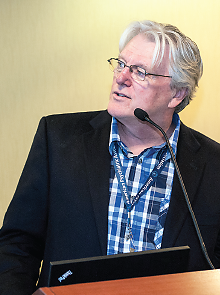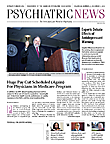“Integrated” or “collaborative” care is the buzz today, a movement toward multi-disciplinary team-based care that has passed the “tipping point” of mere fad and fashion.
But it didn’t begin with the Affordable Care Act or with the relatively recent movements toward cost containment and quality measurement. Rather, like many experiments, it had its origins years before and far removed from the circumstances in which integrated care has quickly gained medical, economic, and political traction.
The concept of providing patients with collaborative medical, mental health, and social and rehabilitative services had a birth in the early 1980s when multitudes of young, previously healthy men began dying of a mysterious disease. The enormity of their needs—many lived alone, cut off from family and friends—hastened the need for a new approach to care.
The AIDS crisis of the 1980s and 1990s that ravaged gay communities in major cities around the country was a “hinge” event, with a distinct before and after. In San Francisco, where thousands of young gay men had migrated in the 1960s and 1970s, the disease first emerged in the summer of 1982.
“In the very early days, there was so much uncertainty about the nature of the disease, how people were getting it and transmitting it, and why they were dying so rapidly,” recalls psychiatrist James Dilley, M.D. “Here were these young, previously healthy men suddenly extremely ill. In those days the average length of life after the onset of acute disease was a couple of months. Many of these men had come from somewhere else and were living in San Francisco on their own. So they had no one to help them. Even those people who did get better would go back into the community and get sick again and be unable to care for themselves.”
In the coming months and years, the tide of illness became, in Dilley’s words, a “tsunami of need.”
Recently graduated from the residency program at UCSF, Dilley and others knew that in addition to the overwhelming medical requirements, there was an urgent need for psychosocial support. What emerged in response was a model—later dubbed “the San Francisco model”—that brought together medical, mental health, and social services to the inpatients at the HIV ward of San Francisco General Hospital; these services would follow discharged patients into the outpatient setting in the community.
“I worked as a consulting psychiatrist on the inpatient service, but also followed those who were in outpatient care,” Dilley told Psychiatric News. “I also advocated for a psychiatric social worker to stay on the unit at all times, as I was a half-time employee. So the social worker and I were embedded in the system with financial support from the city in July 1983.”
Those functions continue to this day at UCSF, and the model of care would spread to other cities and agencies striving to meet the crisis. “The impetus for the development of this model was the acuity of the problem, the specter of a highly contagious disease, the repeated calamity of so many deaths, and the overwhelming psychosocial needs that resulted,” Dilley said. “Primary care providers were grateful for any and all support they could get.”
Beyond the acute medical and psychosocial demands was an immense public health crisis. “When it was understood that the disease was sexually transmitted, it became abundantly clear that the next phase was figuring out how to help those at risk—gay men who were sexually active, as well as IV drug abusers,” Dilley said.
There was an urgent need for psycho-education—ensuring that at risk individuals understood the risk and what they could do to prevent it. “This led to what became an effort at community education and risk-reduction counseling,” Dilley said. “We wrote a proposal to the city department of public health to support development of this kind of intervention. We were going to provide this information to the people who needed it, using messengers who came from the community.”
Thus was born in March 1984 the San Francisco AIDS Health Project (AHP). Over the years AHP reached out to thousands, helping to stem the tide of infection until the development of antiretroviral drugs in the 1990s.
In 2012, the agency changed its name to the Alliance Health Project. Today, Dilley is executive director of the agency and accepted the 2014 Gold Achievement Award for institutionally or academically sponsored programs at this year’s Institute on Psychiatric Services. A description of the project in Psychiatric Services states, “Thirty years ago, AHP was a pioneer in developing the noteworthy ‘San Francisco model of care,’ which involves close collaboration with public health and community service organizations to provide not only HIV testing but also compassionate, respectful care and an array of supportive services, all available to patients at one site.”
Today, Dilley said the project continues the HIV-specific work it has always done, but has added an array of services for the gay and lesbian community not confined to HIV prevention or care. (San Francisco is part of the 12 Cities Project under the Office of National AIDS Policy in the White House and is one of the three major U.S. cities of focus this year for World AIDS Day.)
Throughout the 30-year-long response to HIV/AIDS, community psychiatry has been a natural ally. “From a community psychiatry perspective, HIV is a perfect model in that we have a complicated medical problem that the public at large needs to understand,” Dilley said. “Psychiatrists have been in a good position to assist with that translation, helping people understand these complicated medical issues, making relevant information available to them, and promoting behavior change.” ■

